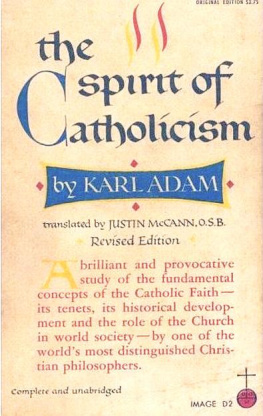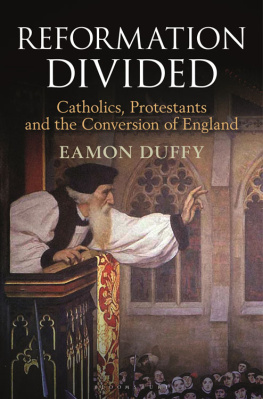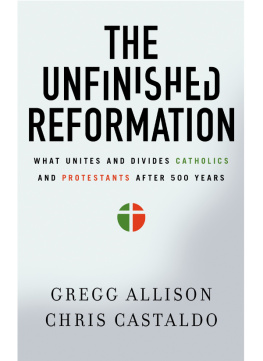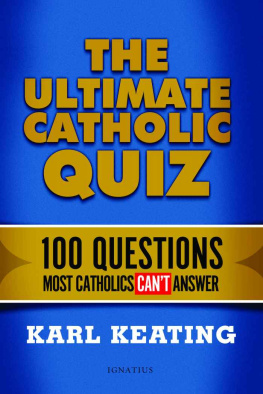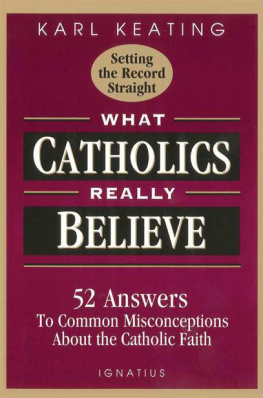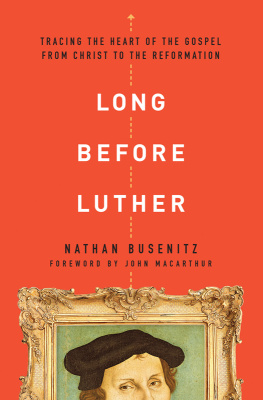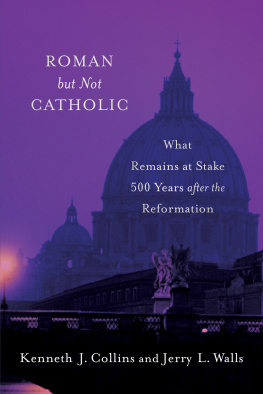Karl Adam - Roots of the Reformation
Here you can read online Karl Adam - Roots of the Reformation full text of the book (entire story) in english for free. Download pdf and epub, get meaning, cover and reviews about this ebook. year: 2012, publisher: Coming Home Network International, genre: Religion. Description of the work, (preface) as well as reviews are available. Best literature library LitArk.com created for fans of good reading and offers a wide selection of genres:
Romance novel
Science fiction
Adventure
Detective
Science
History
Home and family
Prose
Art
Politics
Computer
Non-fiction
Religion
Business
Children
Humor
Choose a favorite category and find really read worthwhile books. Enjoy immersion in the world of imagination, feel the emotions of the characters or learn something new for yourself, make an fascinating discovery.

- Book:Roots of the Reformation
- Author:
- Publisher:Coming Home Network International
- Genre:
- Year:2012
- Rating:5 / 5
- Favourites:Add to favourites
- Your mark:
- 100
- 1
- 2
- 3
- 4
- 5
Roots of the Reformation: summary, description and annotation
We offer to read an annotation, description, summary or preface (depends on what the author of the book "Roots of the Reformation" wrote himself). If you haven't found the necessary information about the book — write in the comments, we will try to find it.
As a faithful Catholic, Karl Adam gives a historically-sensitive and accurate analysis of the causes of the Reformation, one that stands as a valid and sometimes unsettling challenge to the presuppositions of Protestants and Catholics alike.
Roots of the Reformation — read online for free the complete book (whole text) full work
Below is the text of the book, divided by pages. System saving the place of the last page read, allows you to conveniently read the book "Roots of the Reformation" online for free, without having to search again every time where you left off. Put a bookmark, and you can go to the page where you finished reading at any time.
Font size:
Interval:
Bookmark:

ROOTS OF THE REFORMATION
By Karl Adam
Translated by Cecily Hastings
With an Epilogue by Dr. Kenneth Howell
This edition of Karl Adam's Roots of the Reformation is dedicated to men and women who have placed their faith in Jesus Christ and dedicated their own lives to the service of truth at whatever cost, following in the footsteps of such great Christian witnesses as St. Barnabas the Apostle, St. Edmund Campion, St. Isaac Jogues, and St. Francis de Sales.
CHResources
PO Box 8290
Zanesville, OH 43702
740-450-1175
www.chnetwork.org
CHResources is a registered trademark
of the Coming Home Network International, Inc.
(C) 2000, 2004, 2005, 2012 by the
Coming Home Network International
All rights reserved.
Printed in the United States of America
ISBN 0-9702621-0-8
Library of Congress Cataloging-in-Publication Data
Adam, Karl, 1876-1966.
[Sancta in katholischer Sicht. English. Selections]
Roots of the Reformation / by Karl Adam ;
[translated by Cecily Hastings].
p. cm.
Includes bibliographical references.
ISBN 0-9702621-0-8 (alk. paper)
1. Reformation. 2. Luther, Martin, 1483-1546.
3. Catholic Church--Relations. I. Title.
BR307.A314 2012
270.6--dc23
2012000314
EBook by Marpex Inc. Steubenville Ohio
The main reason the Coming Home Network International (CHNetwork)decided to republish this wonderful little book by Professor KarlAdam is that I wished that someone had given it to me years agowhen I was a young Lutheran or later when I was a Protestant pastor.Like most Protestants, I understood the Reformation from onlyone perspective. I had never truly considered, nor listened to,the Catholic side because I had never read anything about theCatholic Church written by a faithful Catholic.
What actually led to the decisions by which large groups of peopleseparated themselves from the fifteen hundred year old unifiedthough suffering Church? Why did this happen? What is the meaningof the continuous fragmentation of those separated groups? Howcan you and I best seek to deal with these issues?
Too often books on the Reformation are unapologetically polemical,biased to one side or the other. The beauty of Professor Adam'sapproach is that his historically sensitive and accurate analysisof the causes of the Reformation stands as a valid and sometimesunsettling challenge to the presuppositions of Protestants andCatholics alike.
In 1947, Karl Adam gave a series of lectures which were latercompiled into his 1951 book, One and Holy, published originallyin Germany by Patmos Verlag in Dusseldorf. Because it was so wellreceived by Catholics and Protestants alike, it was then translatedinto English by Cecily Hastings and published by Sheed and Wardin New York. Five years later Sheed and Ward published The Rootsof the Reformation, an edited and smaller version of One and Holy.Recognizing that this out-of-print book has far from out-livedits usefulness, the CHNetwork republished it, adding extensivebiographical and historical endnotes to make it more accessibleand useful to the modern reader. The result is the current editionnow in your hands. For your convenience the following format hasbeen implemented:
The symbol [FN+] represents Karl Adam's original footnotes, or those of the translator. Each of these is found at the end of the paragraph in which it appears.
The names of persons for whom a paragraph of information can be found in Appendix A (historical figures) are shown as clickable links. A link at the end of each biographical paragraph, refers the reader back to the page on which the person's name was mentioned.
A number within brace brackets ({1}, {2}, {3}, etc.) may follow a historical reference made in the text. Further explanation or clarification is shown as a footnote immediately under the current paragraph. The entire collection of these historical notes is gathered together and duplicated in Appendix B(Historical Endnotes).
All text within brackets [ ] was inserted by the CHNetwork, to explain, for example, the meaning of Latin terms.
I encourage you to read this book with an open mind and a prayerfulheart, and if you do, I guarantee that it will lead you to a deeperunderstanding of your own faith heritage, if not a challenge toit. Of course, it is the hope of the CHNetwork that this bookwill lead you to a closer walk with Jesus Christ, our Lord andSavior, and a more complete acceptance of the fullness of theFaith He gave His Apostles.
Marcus Grodi
President / Founder,
The Coming Home Network International
The following lectures [FN+] were delivered in 1947 to alarge gathering of the Una Sancta movement at Stuttgart and Karlsruhe.The ideas here advanced are often closely related to those expressedby Johannes Hessen in his stimulating work, Luther in KatholischerSicht (Bonn, 1947). I did not actually see his book until afterI had given my lectures. Hessen gives a philosophical and historicalaccount of the "phenomenon of Luther" and the possibility of anultimate understanding with the Lutheran Church. It is my aimto provide this with a clear theological basis.
[FN+ Karl Adam:] This book is a large part of One and Holy, a translation of Una Sancta in Katholischer Sicht, published by Patmos Verlag, Dusseldorf, Germany.
It cannot be doubted that at the present moment, under the shatteringimpact of two world wars, a bridge is being built between Catholicsand Lutherans, at least in the sense that the unreality of merepolemic is being abandoned, that Luther on the one hand and thePapacy on the other are being seen in a clearer and more friendlylight, and that real efforts are being made, by Christians everywhere,to bring about if not a unio fidei [union of faith] at least aunio caritatis [union of heart].
Since Luther can only be understood against the background ofthe ecclesiastical abuses of the late Middle Ages, I could notavoid dealing with these abuses in detail. I have deliberatelytaken my evidence exclusively from Catholic sources, especiallyfrom Karl Bihlmeyer's history of the Church (the objectivity andthoroughness of which have made it the standard work on the subject),and Josef Lortz's brilliant and psychologically penetrating Reformationin Deutschland. In the light of recent researches it should hardlybe necessary to emphasize that these abuses do not give the wholepicture of the medieval Church. Its darker aspects are relievedby so many bright lights that it is not possible to take a pessimisticview of it as a whole.
KARL ADAM
1951
Modern historians are agreed that the roots of the Reformationreach far back into the high Middle Ages. The former monk of Cluny,Pope Gregory VII [1073-1085], in his zeal for the liberty andreform of the Church, so interpreted the papal claims formulatedby Pope Gregory the Great [Gregory I, 540-604] and Pope Nicholas I [858-867] that right up into the late Middle Ages they excited repeated resistance from the secular powers, shook the prestige of the Papal See and so prepared the way for Luther's Reformation. Gregory's Dictatus Papae, {1} in which he claimed for the Pope a direct authority even over secular affairs, with the right to depose unworthy princes and release their subjects from their oath of allegiance, inspired papal policyall through the Middle Ages.
{1} Pope Gregory VII, in his 1075 Dictatus Papae
Font size:
Interval:
Bookmark:
Similar books «Roots of the Reformation»
Look at similar books to Roots of the Reformation. We have selected literature similar in name and meaning in the hope of providing readers with more options to find new, interesting, not yet read works.
Discussion, reviews of the book Roots of the Reformation and just readers' own opinions. Leave your comments, write what you think about the work, its meaning or the main characters. Specify what exactly you liked and what you didn't like, and why you think so.

